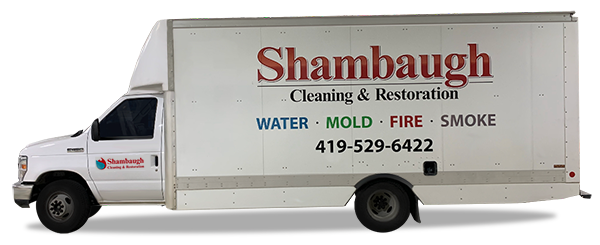Deadly Hazards of Fire Soot
The term “fire soot” refers to smoke residue on surfaces, a complex mixture of substances that is often representative of what was in the fire smoke. Fire soot should not be treated simply as “dirt.” What is in Fire Smoke? Smoke is a complex mixture of different gases and particles, which results from the various materials that burn during a fire event. A typical structure fire (residential home or business) may involve the destruction of plastics, foams, fabrics, carpets, wood products, synthetic fabrics, wool, and asbestos-containing materials. Respiratory hazards connected with exposures when working in an environment that has been sullied by a fire event differ from those from the past, because the materials that our belongings are made from have changed over the years. For example, plastics and other synthetics are much more prevalent in our homes and studios today. It is important to recognize that these materials undergo chemical changes during a fire and become the deposits that are identified as soot.
What is Soot?
Smoke is the result of incomplete combustion, which produces tiny particles of carbon in the air. When deposited, these particulates are identified as soot. Put simply, the particle size of smoke residue on a surface can present a respiratory hazard. The particle size of soot is approximately 2.5 microns, a size that is associated with deep lung penetration. Particles that are approximately 10 microns or larger get trapped in the upper respiratory tract. Particles that are 5 microns or smaller can make it down to the lower lung where the gas exchange occurs in the alveoli. In order to offer some perspective on the size of these particles, the dust you see flying in the light coming through a window is about 40 microns in size.
Airborne soot present within the breathing zone of workers is too small to be seen with the naked eye and can easily be inhaled. Soot will usually adhere to a wall or any other surface that is cooler than the heart of the fire. In fire investigations, a wall free from soot may be an indicator of where the fire began because the fire would burn at a higher temperature in this area. As a fire dies down, the smoke it has caused will disperse leaving behind a residue of quickly cooling particles which is generally referred to as soot.
What is in the Smoke Residue/Soot? All materials involved in a fire cause odors. Typically, soot is representative of what has burned, but may include byproducts that at first seem unrelated to the original material. For example, hydrogen cyanide is a byproduct of burning wool. When wood burns it can produce manganese and benzene. As many products as there are in the world, there are an equal number of byproducts produced in a fire. Each fire is different based on the contents of what has burned during the event. Organic and inorganic materials produce different types of smoke residue or soot. These residues may be present on surfaces that conservators may be tasked with treating. Burnt organic material produces soot that is hard to see and often has a very pungent odor. This is known as protein smoke. It can discolor paints and varnishes.
Protein smoke can disperse over large areas and attach itself to everything. How the fire burns and how much moisture is in the air while the fire burns, plays a role in soot deposition on articles. The amount of moisture in the air is a key component in whether the smoke that is produced is wet or dry. There are several types of smoke or soot, which may be present on a surface that conservators might be tasked with treating: Wet Smoke—can present as a sticky residue or soot, and is often associated with a smoldering type of fire and often will have a strong odor. Dry Smoke—associated with a fast-burning fire and occurs at high temperatures. Protein—often present in soot, usually invisible, it can discolor paints and varnishes and often has a very pungent odor. Protein odors could be caused by food on the stove burning slowly or other sources. The slow burn allows the protein to disperse and attach itself to everything, producing a strong odor. Airborne Exposures Soot is in the general category of airborne particulate matter. While we would not expect most volatile organic compounds (VOC) to survive a fire and still be present on the soot, there may be metals present as well as some chlorinated compounds. There are not many studies that address what compounds could be associated with soot particles, essentially using the particles as a “magic carpet” to get into the lungs.
The Fire Department examined this phenomenon during a study focused on firefighter exposures after the fire was extinguished and their findings indicated that some chlorinated products become attached to airborne particulate matter. This is an important study because it points to the fact that exposure to airborne vapors and residues during a post-event time frame is much more complex than our current understanding allows. However, the important point to get from this is that soot may be more than just a particulate hazard; it can potentially carry other chemical residues that are potentially harmful to the respiratory system.
The main health hazards potentially associated with soot would be irritant hazards. Soot can be both irritating to your lung tissue and to your skin. The most common route of exposure during the conservation and restoration process is inhalation due to the proximity of your breathing zone to your work area. This is assuming that the work is not occurring under a hood or with some other form of capture exhaust ventilation. The second most common route of exposure is self-inoculation. Consider this scenario, you are working on a piece, the piece is covered in soot, wearing gloves will protect your skin but what happens when you get an itch in around your eyes or nose? How clean is the back of your hand or the second knuckle on your finger? How Can You Protect Yourself? Protecting yourself from the potential hazards associated with working soot-contaminated items is simple:
• Do not eat or drink in the area where the soot contaminated items are stored or being restored.
• Wear an air purifying respirator. (chemical, biologica,l radiological, and nuclear) canisters will provide the most protection against chemical vapors and particulates.
° An N95 respirator is appropriate where particulates are the only concern. (Note both types of respirators require annual fit testing.)
• Wear nitrile gloves.
• Do not bring your hands to your face while your gloves are on.
• Wear safety glasses.
• If possible, do all work using a local exhaust or fume extractor such as a chemical hood or air scrubber
. • Use a HEPA/UPLA vacuum to remove the residue from the article.
• Wash your hands thoroughly after removing gloves.
If you are asked to enter a fire damaged building to conduct an assessment or do your own Content Total Loss assessment, please consult with a health and safety professional. It is always recommended in these circumstances. The presence of debris piles that may contain many other materials will probably present other chemical hazards. For example, formaldehyde, a known human carcinogen, is found in the glues that comprise plywood and oriented strand board (OSB), as well as many plastics, carpets, textiles, and other materials commonly found in typical structure fires. The debris pile can often trap toxic chemicals like formaldehyde for days.
The recommended personal protective equipment for working in a fire damaged building, includes the following: • Wear a full-face, air purifying cartridge respirator, equipped with CBRN canisters. These are the only canister cartridges that offer some protection from formaldehyde. Formaldehyde is one of the most pervasive toxic chemicals and is found at nearly every fire due to the content load. Note that organic vapor cartridges will not work for formaldehyde.
• Wear breathable disposable clothing.
• Wear nitrile gloves.
• Wear safety glasses.
Shambaughs Cleaning & Restoration is always here to help in any way night or day.
Call the Fire Soot Experts 419-529-6422






